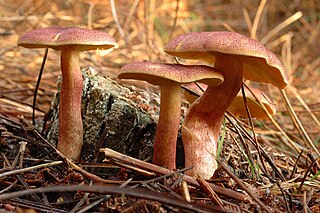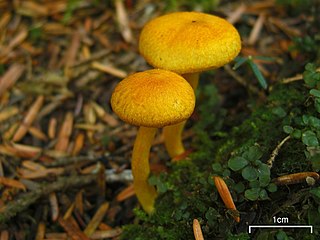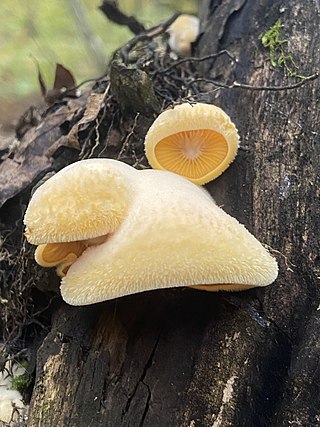
A language family is a group of languages related through descent from a common ancestor, called the proto-language of that family. The term family is a metaphor borrowed from biology, with the tree model used in historical linguistics analogous to a family tree, or to phylogenetic trees of taxa used in evolutionary taxonomy. Linguists thus describe the daughter languages within a language family as being genetically related. The divergence of a proto-language into daughter languages typically occurs through geographical separation, with different regional dialects of the proto-language undergoing different language changes and thus becoming distinct languages over time.

Macular degeneration, also known as age-related macular degeneration, is a medical condition which may result in blurred or no vision in the center of the visual field. Early on there are often no symptoms. Over time, however, some people experience a gradual worsening of vision that may affect one or both eyes. While it does not result in complete blindness, loss of central vision can make it hard to recognize faces, drive, read, or perform other activities of daily life. Visual hallucinations may also occur.

Tricholomopsis is a genus of fungi in the family Phyllotopsidaceae. Its best known member and type species is Tricholomopsis rutilans. The name means appearing like Tricholoma. The genus has a widespread distribution, and contains about 30 species. Tricholomopsis was described in 1939 by German mycologist Rolf Singer.

Tricholomopsis rutilans, commonly known as plums and custard, or red-haired agaric, is a species of gilled mushroom found across Europe and North America.

The Desmidiaceae are one of four families of charophyte green algae in the order Desmidiales (desmids).

Bambusina is a genus of freshwater green algae in the family Desmidiaceae. Bambusina is a cosmopolitan genus, typically associated with acidic and oligotrophic waters. Species of this genus, particularly B. borreri, have been reported in all continents except Antarctica.
Neoflageoletia is a genus of fungi in the family Phyllachoraceae. This is a monotypic genus, containing the single species Neoflageoletia bambusina.

Guignardia is a genus of fungi in the family Botryosphaeriaceae.
Ijuhya is a genus of fungi in the class Sordariomycetes. It consisted of seven species in 2008, and 21 species in 2023.
Peloronectria is a genus of fungi in the Hypocreales order. The relationship of this taxon to other taxa within the order is unknown, and it has not yet been placed with certainty into any family. Unchanged in 2020.

Calonectria is a genus of ascomycete fungi. Calonectria species are plant pathogens.

Tricholoma portentosum, commonly known as the charbonnier, streaked tricholoma, or sooty head, in North America, is a grey-capped edible mushroom of the large genus Tricholoma. It is found in woodlands in Europe and North America.
Pseudonectria is a genus of fungi in the family Nectriaceae.
Ceratostomella is a genus of fungi in the Annulatascaceae family of the Ascomycota. The relationship of this taxon to other taxa within the Sordariomycetes class is unknown, and it has not yet been placed with certainty into any order.

Tricholomopsis sulfureoides is a species of gilled mushroom found in the United States. Its fruit bodies have pale yellow caps with differently colored zones of paler yellow and light yellow streaks. Its gills are broad and yellow, with an adnexed attachment to the yellow stipe. Young mushrooms have a thin partial veil. The mushroom is found growing singly or in groups on rotting conifer logs. The fungus was originally described as Clitocybe sulphurea by Charles Horton Peck in 1888; Rolf Singer transferred it to Tricholomopsis in 1969.

Tricholomopsis decora, commonly known as prunes and custard, is a species of gilled mushroom in the genus Tricholomopsis. It occurs in North America and in Britain, and it grows in conifer forests. It is regarded as nonpoisonous.

Tricholomopsis ornata is a species of Tricholomopsis from Europe.

The Phyllotopsidaceae are a family of fungi in the order Agaricales. Basidiocarps are either clavarioid and simple, agaricoid, or cyphelloid. Marcel Locquin originally established the family on the basis of shared morphological characteristics, but did not validly publish it. The name was later validated by Olariaga and the family was expanded to contain other genera as a result of molecular research, based on cladistic analysis of DNA sequences.

















